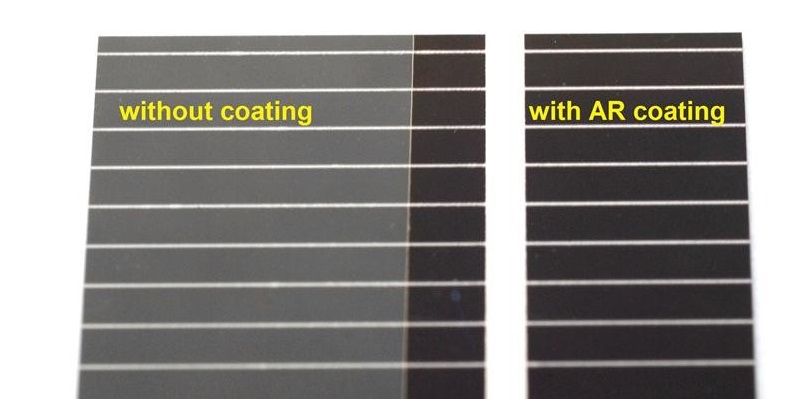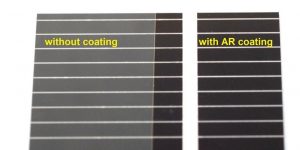Loughborough scientists come up with method of reducing solar panel glare by a multi-layer anti-reflection (AR) coating for glass surfaces, which reduces the sun’s reflection from photovoltaic panels while at the same time improving their efficiency.
The coating was developed by researchers at the Centre for Renewable Energy and Sustainable Technology (CREST) who believe it will be attractive to solar panel manufacturers.
It is applied using the same technology as that used for depositing anti-reflection coatings on spectacles.
Professor Michael Walls, one of three CREST members who came up with the multi-layer AR design, said: “We really want to see these AR coatings implemented by manufacturers.
“They improve the module power output by about four per cent and will be low cost if manufactured in high volume. It’s a great added value proposition for float glass manufacturers.”
Each glass surface reflects about four per cent of the incident light, representing a significant loss of light into the module.
The AR design, developed by Professor Walls, Dr Piotr Kaminski and Fabiana Lisco, reduces the reflection by more than 70 per cent across the wavelength range accepted by PV panels.
The effectiveness of the coating is demonstrated in Picture 1 where a glass cover sheet has been placed above a crystalline silicon PV cell.
The area covered by the AR coated glass is clearly visible whereas the part of the cell covered with non-coated glass is obscured by reflections.
The design consists of only four alternate layers of zirconium oxide and silicon dioxide and the whole stack is less than 300 nanometres thick.
These materials were chosen because they are abundant and low cost.
Dr Kaminski said: “The AR coating has to be cost effective and so the design is a compromise. We want the best quality AR coating but with inexpensive materials and as few layers as possible. Also, the whole stack should be very thin to save time in manufacturing.”
The coatings are deposited using magnetron sputtering by a machine developed by UK based Power Vision Ltd to deposit AR coatings on spectacle lenses.
Although the work is specifically aimed at the improvement in efficiency of thin film Cadmium Telluride solar cell devices, the coatings can be applied to other thin film technologies such as CIGS (copper indium gallium selenide) and amorphous silicon.
They can also be applied to cover glass on crystalline silicon modules and even third generation devices such as organic or perovskite devices.
Dr Kaminski said: “Each PV technology operates in a different wavelength range and it is relatively simple to accommodate this in the multilayer design for each case”.
Magnetron sputtering is an easily scaleable technology already used by glass manufacturers for other types of coatings.
The materials are scratch resistant and very durable and would be effective for the full 25 year warranty offered by PV module manufacturers.
The work was funded by the Engineering and Physical Sciences (EPSRC) Supergen SuperSolar Hub.
Reference:
University of Loughborough












Comments